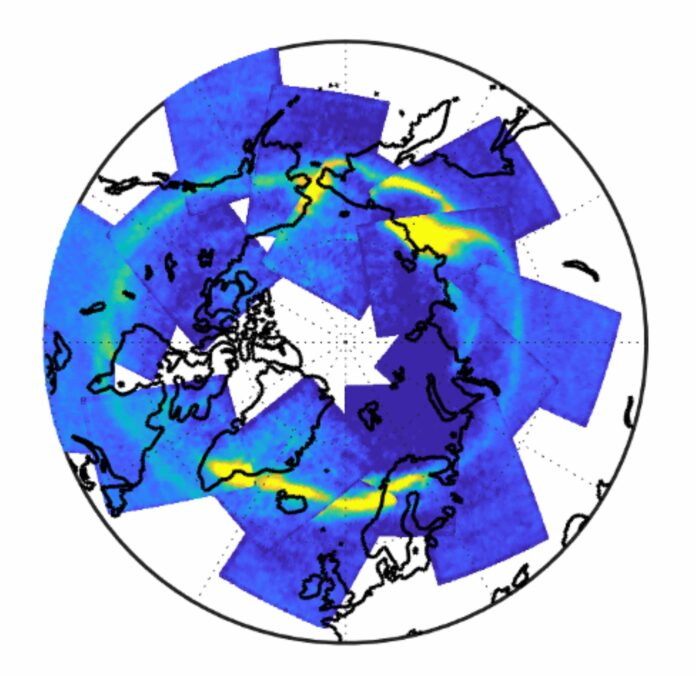The aurora is caused by energetic particle precipitation into Earth’s atmosphere due to energy buildup and release in Earth’s magnetic field from interaction with the solar wind. Many types of emissions of light are associated with Earth’s aurora. One of these emissions is the infrared emission associated with excited CO2 molecules.
In a new study published in AGU Geophysical Research Letters, scientists unveiled global observations of aurora associated with carbon dioxide using satellite measurements.
The “edge of space,” also called the Karman line, is located about 100 km above the thermosphere, close to its bottom. The Karman line indicates the altitude at which satellites can orbit. The thermosphere and ionosphere portion of Earth’s atmosphere is the site of numerous auroral discharges. Due to an excited state of atomic oxygen, the often-seen green and red auroras appear near 100 km and 250 km in height, respectively.
While carbon dioxide is well-known for its role as a greenhouse gas in the troposphere, it is also present in very small quantities in the Earth’s atmosphere at the edge of space. Nearly 90 km, or 56 miles, above the surface of the Earth, carbon dioxide experiences a vibrational excitation during an aurora, which causes it to release more infrared radiation than is generally seen in the atmosphere.
The scientists used the Atmospheric Infrared Sounder to observe the elevated infrared signals from carbon dioxide during an aurora. The Atmospheric Infrared Sounder gathers infrared energy emitted from Earth’s surface and atmosphere globally daily. On board NASA’s Aqua spacecraft, its data offers 3D temperature and water vapor readings throughout the atmospheric column and various trace gases, surface, and cloud features.
The global science team collaborating on the study noted increased carbon dioxide infrared signals during an aurora. To study aurora and energetic particle precipitation globally, future research can use the dataset created by efforts to isolate these emissions.
Bossert, assistant professor at the School of Earth and Space Exploration and the School of Mathematical and Statistical Sciences at ASU, said, “This offers a new way to observe Earth’s aurora from space. Different auroral emissions can be associated with different altitudes and particle energy. Carbon dioxide auroral emissions occur in the region we consider the edge of space, a little lower in altitude than where satellites typically orbit. The observations may yield insight into physical processes associated with the aurora.”
Although it was previously recognized that carbon dioxide might be excited during an aurora, these datasets and analysis techniques offer the first daily global observations employing a nadir-viewing satellite instrument over parts of the northern and southern hemispheres. Future investigations into aurora and energetic particle interactions with Earth’s atmosphere can use satellite measurements, which cover more than 20 years.
Journal Reference:
- Katrina Bossert, Lars Hoffmann, Martin Mlynczak, Linda Hunt. Observations of 4.26 μm CO2 Auroral Emissions From AIRS Nadir Sounder Measurements. Geophysical Research Letters. DOI: 10.1029/2023GL103856
